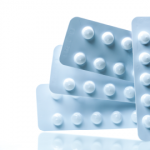Education & Follow-Up
Given all these barriers, Dr. Edwards said it is unsurprising that patient education on gout has failed. A South Korean study showed that treatment adherence steadily dropped off over 60 months for newly diagnosed patients with gout initiating treatment with allopurinol or febuxostat, despite an intensive patient education program. A follow-up survey found that poor health literacy about the disease and the medications were by far the greatest reasons given for lack of treatment adherence. Instructive from this study is that implementing a rigorous education program is not sufficient to improve treatment adherence.2
Regular follow-up of patients is needed to reinforce information about the disease and its management. This approach was investigated by a study conducted in Nottingham involving a nurse-led intervention designed to educate patients about gout with regular follow-ups after treatment initiation.3 In the trial, during the first clinical visit after a patient was diagnosed with gout by a rheumatologist, a nurse followed up with a detailed education on the causes of gout, risk factors and clinical consequences. They addressed such strategies for urate lowering as weight loss, urate lowering therapy with or without prophylaxis and why there is a serum urate target of <6.0 mg/dL. Additionally, the nurse checked patient’s uric acid levels, initiated the urate lowering therapy and set up a return telemedicine visit for one month.
After one month, the nurse checked on the patient’s uric acid levels and adherence to urate lowering therapy. They also found out if the patient had any questions about educational aspects, suggested dose escalation if needed and set up another telemedicine visit for one month. This cycle continued until the patient achieved the treatment target, at which they followed up every three months up to a year and then the nurse referred patients to their primary care doctor.
The Results
The program showed excellent results, said Dr. Edwards, with 92% of patients at <6.0 mg/dL target and 85% at <5 mg/dL at 12 months. At the five-year follow-up, under the care of their primary physician, no drop off in the percentage of patients who achieved their target was found, with 90.7% of patients at <6.0 mg/dL and 85.3% at <5 mg/dL.
Dr. Edwards attributed the good results to patients feeling that they were in control of their disease and being motivated to stay within the guidelines of their target measures. Although acknowledging that not every practice has a dedicated nurse to fulfill this role, he said the model can be done economically and is currently being employed by several academic rheumatology centers.


